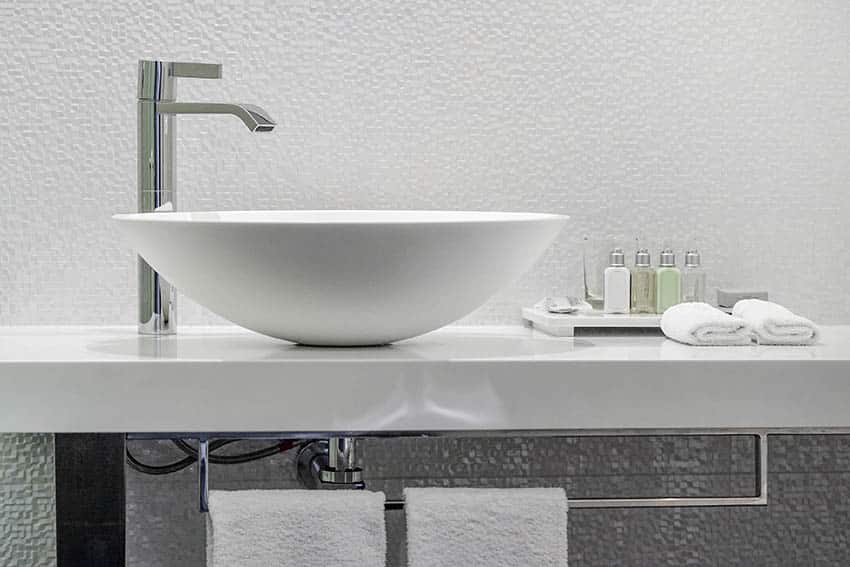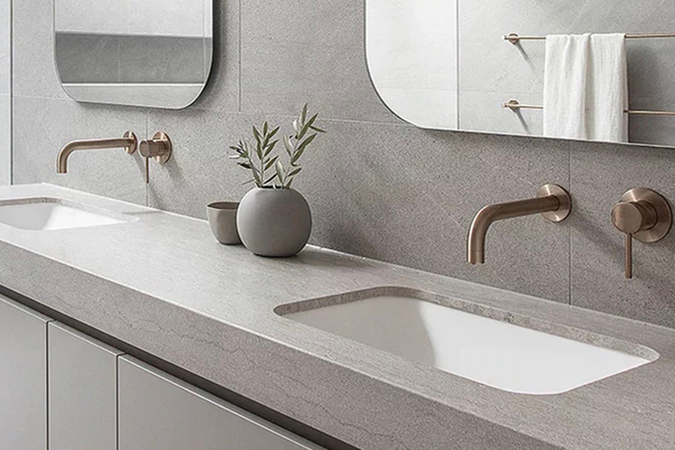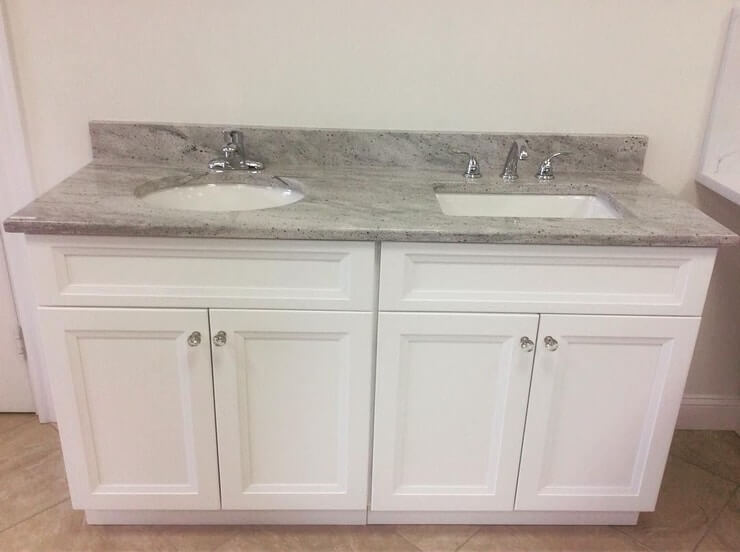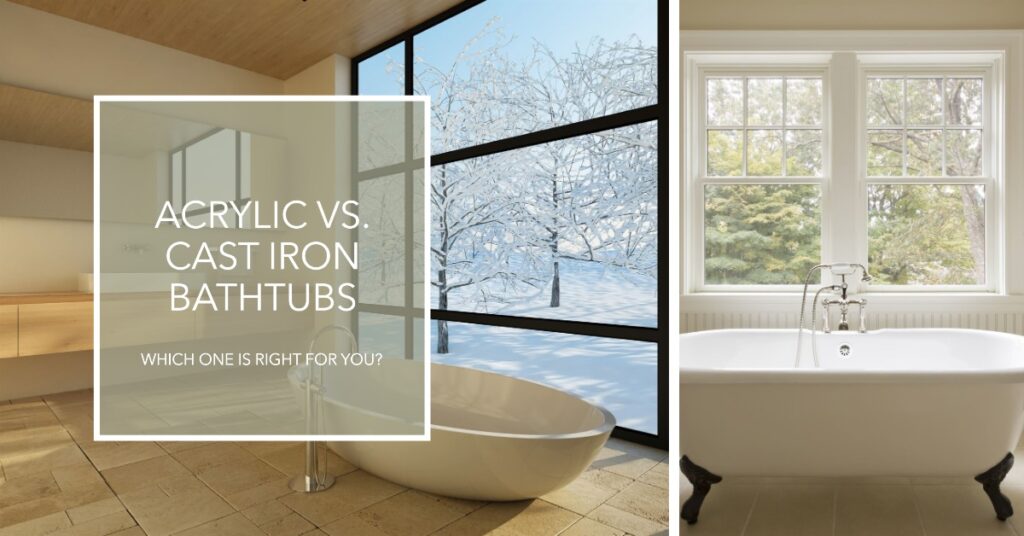When it comes to bathroom sinks, two popular materials often come to mind: porcelain and stainless steel. But which one is better? Let's take a closer look at the pros and cons of each material to help you decide. Porcelain Sinks: Porcelain sinks are made from a mixture of clay and other minerals, which are then fired at high temperatures. This creates a hard, glazed surface that is durable and easy to clean. Pros: Porcelain sinks are known for their classic, elegant look and come in a variety of shapes and sizes. They are also resistant to stains, scratches, and chipping, making them a great choice for busy bathrooms. Additionally, porcelain is a non-porous material, meaning it won't absorb water or bacteria, making it hygienic and easy to maintain. Cons: One downside to porcelain sinks is that they can be prone to cracking or chipping if heavy objects are dropped on them. They can also be more expensive than other materials, such as stainless steel. Stainless Steel Sinks: Stainless steel sinks are made from a combination of steel and chromium, giving them a sleek, modern look. They are also known for their durability and low maintenance. Pros: Stainless steel sinks are resistant to corrosion, making them long-lasting and easy to clean. They are also lightweight and can be more affordable than other materials. Additionally, they can be molded into different shapes and sizes, making them a versatile option for any bathroom design. Cons: One possible drawback to stainless steel sinks is that they can be noisy, especially when water is running or dishes are being washed. They can also be prone to scratches and water spots, requiring regular cleaning to maintain their shine. So which one is better? It ultimately depends on your personal preferences and needs. If you want a classic, elegant look and don't mind a higher price point, porcelain may be the way to go. But if you prefer a modern, durable option that is easy on the wallet, stainless steel may be the better choice.Porcelain vs. Stainless Steel Sinks: Which One is Better?
Porcelain and ceramic are often used interchangeably, but they are actually two different materials. While porcelain is made from a mixture of clay and minerals, ceramic is made solely from clay. So how do they compare when it comes to bathroom sinks? Porcelain Sinks: As mentioned before, porcelain sinks are known for their durability and elegant appearance. They are also resistant to stains and scratches, making them easy to maintain. Pros: Like porcelain, ceramic sinks are also non-porous, making them hygienic and easy to clean. They also come in a variety of shapes and sizes, and can be more affordable than porcelain. Cons: One downside to ceramic sinks is that they can be prone to chipping and cracking if not handled with care. They can also be more easily scratched than porcelain sinks. Ceramic Sinks: Ceramic sinks have a similar appearance to porcelain sinks, but they are typically less expensive. They are made from a thinner layer of clay, which is glazed and fired at lower temperatures than porcelain. Pros: Ceramic sinks are lightweight and easy to install, making them a great choice for DIY projects. They are also resistant to stains and scratches, and come in a variety of colors and styles. Cons: As mentioned before, ceramic sinks can be more prone to chipping and cracking. They are also not as durable as porcelain and may need to be replaced sooner. When deciding between porcelain and ceramic sinks, it ultimately comes down to your budget and desired look. If you want a high-end, durable option, porcelain may be the way to go. But if you are on a budget and don't mind a slightly less durable option, ceramic can still provide a sleek and stylish look for your bathroom.Comparing Bathroom Sink Materials: Porcelain vs. Ceramic
There are many different materials to choose from when it comes to bathroom sinks, each with their own pros and cons. Let's take a closer look at some of the most popular options and what makes them unique. Porcelain: As we've previously discussed, porcelain sinks are known for their elegant appearance and durability. They are also non-porous and resistant to stains and scratches. Pros: In addition to these benefits, porcelain sinks also come in a variety of shapes, sizes, and colors, making them a versatile choice for any bathroom design. They are also easy to clean and maintain. Cons: The main drawback to porcelain sinks is their price point, which can be higher than other materials. They can also be prone to chipping and cracking if not handled with care. Stainless Steel: As mentioned before, stainless steel sinks are known for their durability and modern appearance. Pros: Stainless steel sinks are resistant to corrosion and easy to clean, making them a low-maintenance option. They also come in a variety of shapes and sizes and can be more affordable than other materials. Cons: Some may find the noise of running water or dishes being washed in a stainless steel sink to be a drawback. They can also be prone to scratches and water spots. Acrylic: Acrylic sinks are made from a lightweight, plastic-like material that is known for its affordability and versatility. Pros: Acrylic sinks are lightweight and easy to install, making them a great choice for DIY projects. They also come in a variety of colors and styles, and are resistant to stains and scratches. Cons: While they are durable, acrylic sinks can be prone to scratches and can melt or warp if exposed to high heat. Marble: Marble sinks are made from a natural stone that gives them a luxurious, high-end look. Pros: Marble sinks are heat-resistant, making them a great choice for bathrooms with hot styling tools. They are also resistant to stains and scratches and come in a variety of colors and patterns. Cons: Marble sinks can be expensive and require regular maintenance to keep their shine. They can also be prone to chipping and staining if not sealed properly. As you can see, each material has its own unique benefits and drawbacks. When choosing the right material for your bathroom sink, consider your budget, desired appearance, and maintenance preferences.The Pros and Cons of Different Bathroom Sink Materials
With so many materials to choose from, it can be overwhelming to decide on the right one for your bathroom sink. To help make your decision easier, let's compare some of the most popular options. Porcelain: Porcelain sinks are known for their durability and elegant appearance. They are also resistant to stains and scratches, making them easy to maintain. Pros: In addition to these benefits, porcelain sinks also come in a variety of shapes, sizes, and colors, making them a versatile choice for any bathroom design. They are also non-porous and easy to clean. Cons: The main drawback to porcelain sinks is their higher price point. They can also be prone to chipping and cracking if not handled with care. Cast Iron: Cast iron sinks are made from a heavy, durable material that can add a classic, vintage look to your bathroom. Pros: Cast iron sinks are highly durable and resistant to scratches and stains. They also come in a variety of sizes and colors. Cons: The main drawback to cast iron sinks is their weight, which can make them difficult to install. They also require regular maintenance to prevent rusting. Acrylic: Acrylic sinks are made from a lightweight, plastic-like material that is known for its affordability and versatility. Pros: Acrylic sinks are lightweight and easy to install, making them a great choice for DIY projects. They also come in a variety of colors and styles and are resistant to stains and scratches. Cons: While they are durable, acrylic sinks can melt or warp if exposed to high heat. They can also be prone to scratches. Marble: Marble sinks are made from a natural stone that gives them a luxurious, high-end look. Pros: Marble sinks are heat-resistant, making them a great choice for bathrooms with hot styling tools. They are also resistant to stains and scratches and come in a variety of colors and patterns. Cons: Marble sinks can be expensive and require regular maintenance to keep their shine. They can also be prone to chipping and staining if not sealed properly. When choosing the right material for your bathroom sink, consider your budget, desired appearance, and maintenance preferences. Each material has its own unique benefits and drawbacks, so be sure to weigh your options carefully before making a decision.Choosing the Right Material for Your Bathroom Sink: A Comparison
Acrylic and cast iron are two popular choices for bathroom sinks, but how do they compare? Let's take a closer look at the pros and cons of each material to help you decide which one is right for your bathroom. Acrylic: As mentioned before, acrylic sinks are made from a lightweight, plastic-like material that is known for its affordability and versatility. Pros: Acrylic sinks are lightweight and easy to install, making them a great choice for DIY projects. They also come in a variety of colors and styles and are resistant to stains and scratches. Cons: Acrylic sinks can melt or warp if exposed to high heat, and they can be prone to scratches. They also require regular maintenance to prevent discoloration. Cast Iron: Cast iron sinks are made from a heavy, durable material that can add a classic, vintage look to your bathroom. Pros: Cast iron sinks are highly durable and resistant to scratches and stains. They also come in a variety of sizes and colors. Cons: The main drawback to cast iron sinks is their weight, which can make them difficult to install. They also require regular maintenance to prevent rusting. So which one is right for your bathroom? It ultimately depends on your personal preferences and needs. If you want a lightweight, affordable option that comes in a variety of colors and styles, acrylic may be the way to go. But if you prefer a classic, durable option that can add a touch of vintage charm to your bathroom, cast iron may be the better choice.Acrylic vs. Cast Iron Sinks: Which One is Right for Your Bathroom?
Choosing the right material for your bathroom sink can be a difficult decision, especially when there are so many options available. To make the process easier, let's take a closer look at the differences between some of the most popular materials. Porcelain: Porcelain sinks are known for their durability and elegant appearance. They are also resistant to stains and scratches, making them easy to maintain. Pros: In addition to these benefits, porcelain sinks also come in a variety of shapes, sizes, and colors, making them a versatile choice for any bathroom design. They are also non-porous and easy to clean. Cons: The main drawback to porcelain sinks is their higher price point. They can also be prone to chipping and cracking if not handled with care. Marble: Marble sinks are made from a natural stone that gives them a luxurious, high-end look. Pros: Marble sinks are heat-resistant, making them a great choice for bathrooms with hot styling tools. They are also resistant to stains and scratches and come in a variety of colors and patterns. Cons: Marble sinks can be expensive and require regular maintenance to keep their shine. They can also be prone to chipping and staining if not sealed properly. Stainless Steel: As mentioned before, stainless steel sinks are known for their durability and modern appearance. Pros: Stainless steel sinks are resistant to corrosion and easy to clean, making them a low-maintenance option. They also come in a variety of shapes and sizes and can be more affordable than other materials. Cons: Some may find the noise of running water or dishes being washed in a stainless steel sink to be a drawback. They can also be prone to scratches and water spots. Ceramic: Ceramic sinks are made solely from clay and are often compared to porcelain sinks. Pros: Ceramic sinks are also non-porous and easy to clean. They come in a variety of shapes and sizes and can be more affordable than porcelain. Cons: Ceramic sinks can be prone to chipping and cracking if not handled with care. They can also be more easily scratched than porcelain sinks.Understanding the Differences Between Bathroom Sink Materials
The Importance of Choosing the Right Bathroom Sink Material for Your House Design

Introduction
 When it comes to designing or renovating a house, the bathroom sink may not be the first thing that comes to mind. However, choosing the right bathroom sink material can make a significant impact on the overall look and functionality of your bathroom. With a wide variety of sink materials available in the market, it can be overwhelming to make a decision. In this article, we will compare different bathroom sink materials to help you make an informed choice for your house design.
When it comes to designing or renovating a house, the bathroom sink may not be the first thing that comes to mind. However, choosing the right bathroom sink material can make a significant impact on the overall look and functionality of your bathroom. With a wide variety of sink materials available in the market, it can be overwhelming to make a decision. In this article, we will compare different bathroom sink materials to help you make an informed choice for your house design.
Porcelain
 Porcelain
is a popular choice for bathroom sinks due to its durability, affordability, and versatility.
Porcelain
sinks are made from a mixture of clay and other materials, coated with a layer of glaze that gives it a smooth, glossy finish. This material is resistant to stains, scratches, and chipping, making it an ideal option for high-traffic bathrooms. It also comes in a variety of colors and designs, making it easy to match with any house design.
Porcelain
is a popular choice for bathroom sinks due to its durability, affordability, and versatility.
Porcelain
sinks are made from a mixture of clay and other materials, coated with a layer of glaze that gives it a smooth, glossy finish. This material is resistant to stains, scratches, and chipping, making it an ideal option for high-traffic bathrooms. It also comes in a variety of colors and designs, making it easy to match with any house design.
Glass
 For a more modern and sleek look, consider a
glass
sink for your bathroom.
Glass
sinks are made from tempered glass, which is highly durable and resistant to cracks and scratches. They are available in a range of colors, shapes, and sizes, making them a versatile choice for any house design. However,
glass
sinks may require more maintenance as they are prone to water spots and fingerprints.
For a more modern and sleek look, consider a
glass
sink for your bathroom.
Glass
sinks are made from tempered glass, which is highly durable and resistant to cracks and scratches. They are available in a range of colors, shapes, and sizes, making them a versatile choice for any house design. However,
glass
sinks may require more maintenance as they are prone to water spots and fingerprints.
Marble
 For a touch of luxury and elegance,
marble
sinks are a great option for your bathroom.
Marble
is a natural stone that comes in a variety of colors and patterns, making each sink unique. It is a durable material, but it may require sealing to prevent staining and etching.
Marble
sinks can add a touch of sophistication to any house design, but they come with a higher price tag.
For a touch of luxury and elegance,
marble
sinks are a great option for your bathroom.
Marble
is a natural stone that comes in a variety of colors and patterns, making each sink unique. It is a durable material, but it may require sealing to prevent staining and etching.
Marble
sinks can add a touch of sophistication to any house design, but they come with a higher price tag.
Stainless Steel
 Stainless steel
sinks are a popular choice for modern and industrial house designs. They are durable, easy to clean, and resistant to stains and corrosion.
Stainless steel
sinks come in a range of finishes, including brushed, polished, and matte, making them a versatile choice for any bathroom. However, they may be prone to scratches and water spots, and they can be quite noisy when water is running.
Stainless steel
sinks are a popular choice for modern and industrial house designs. They are durable, easy to clean, and resistant to stains and corrosion.
Stainless steel
sinks come in a range of finishes, including brushed, polished, and matte, making them a versatile choice for any bathroom. However, they may be prone to scratches and water spots, and they can be quite noisy when water is running.
Copper
 For a unique and rustic look, consider a
copper
sink for your bathroom.
Copper
sinks are made from a single sheet of copper and are available in various finishes, including hammered, smooth, or aged. They are resistant to bacteria and easy to maintain, but they may require regular polishing to maintain their shine.
Copper
sinks can add a touch of warmth and character to any house design.
For a unique and rustic look, consider a
copper
sink for your bathroom.
Copper
sinks are made from a single sheet of copper and are available in various finishes, including hammered, smooth, or aged. They are resistant to bacteria and easy to maintain, but they may require regular polishing to maintain their shine.
Copper
sinks can add a touch of warmth and character to any house design.
Conclusion
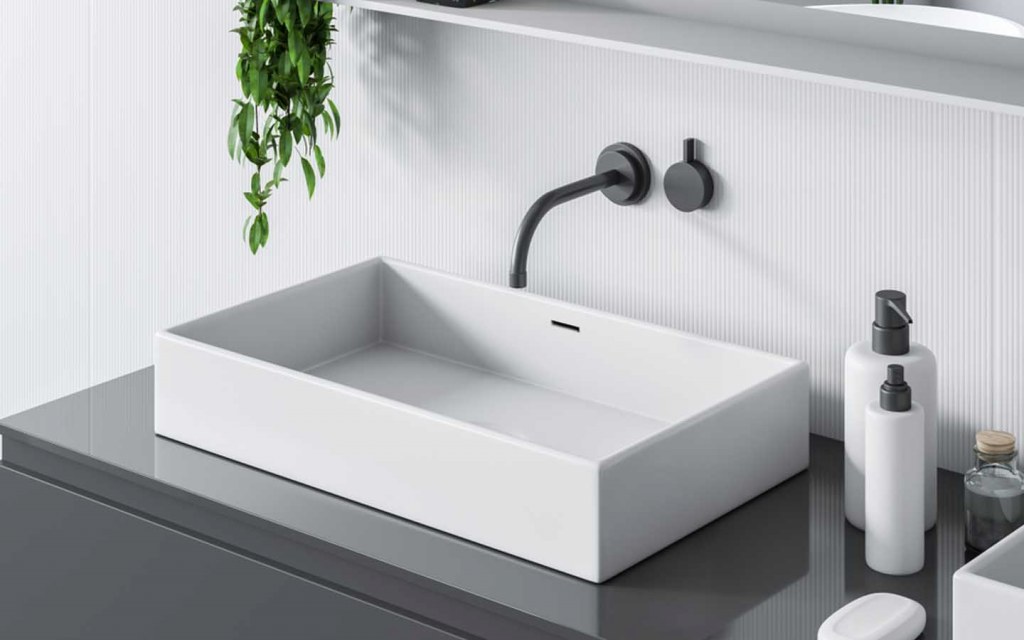 Choosing the right bathroom sink material is crucial for the overall look and functionality of your bathroom. Consider factors such as durability, maintenance, and aesthetics when making your decision. With a wide range of materials available, you can find the perfect sink to complement your house design.
Choosing the right bathroom sink material is crucial for the overall look and functionality of your bathroom. Consider factors such as durability, maintenance, and aesthetics when making your decision. With a wide range of materials available, you can find the perfect sink to complement your house design.



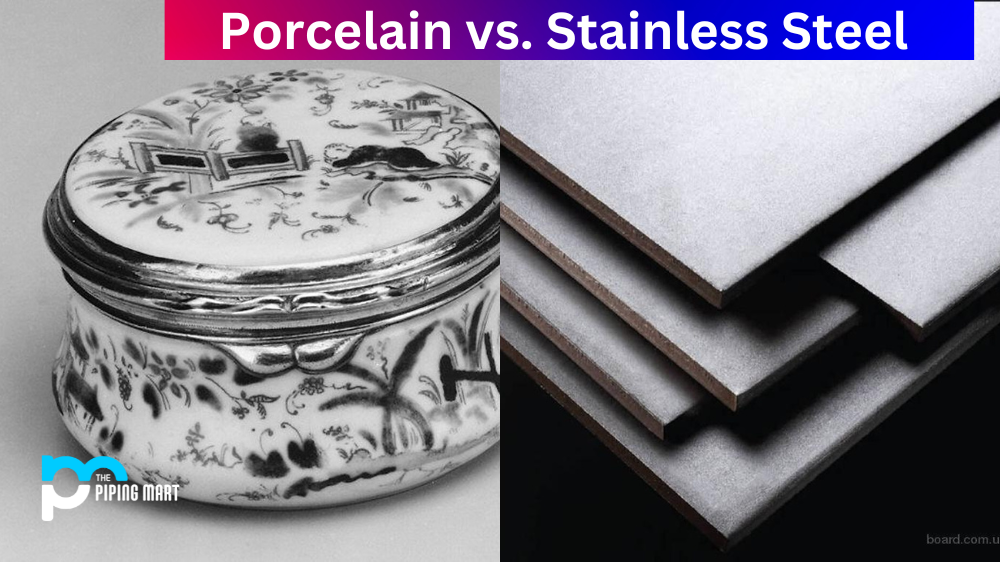


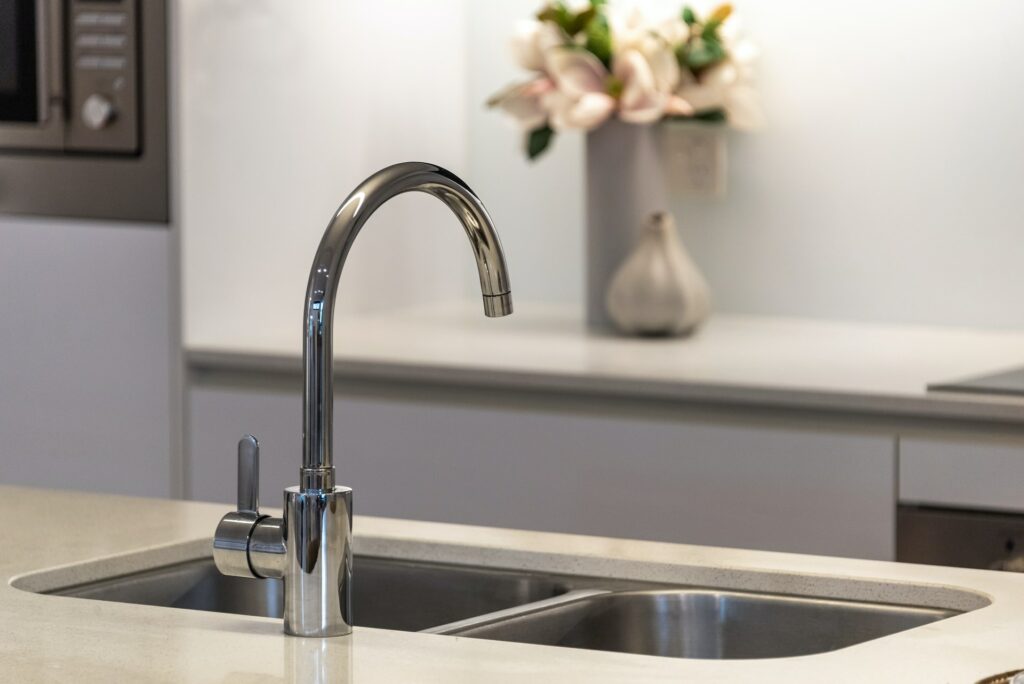

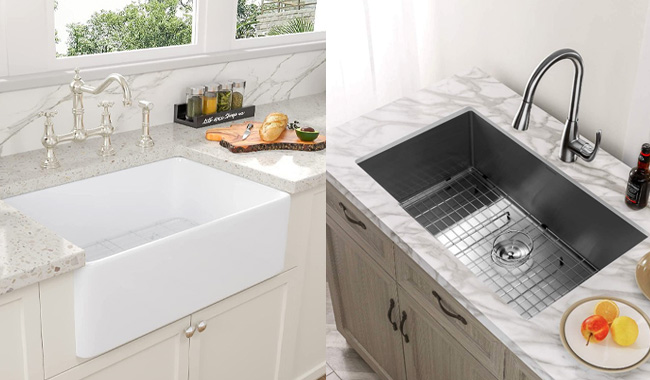









:max_bytes(150000):strip_icc()/bathroom-ceramic-tile-vs-vinyl-plank-1822815-FINAL-5bae841646e0fb002670b7c6-2e9bc35535b84e82999f7aa4dc052ff2.png)


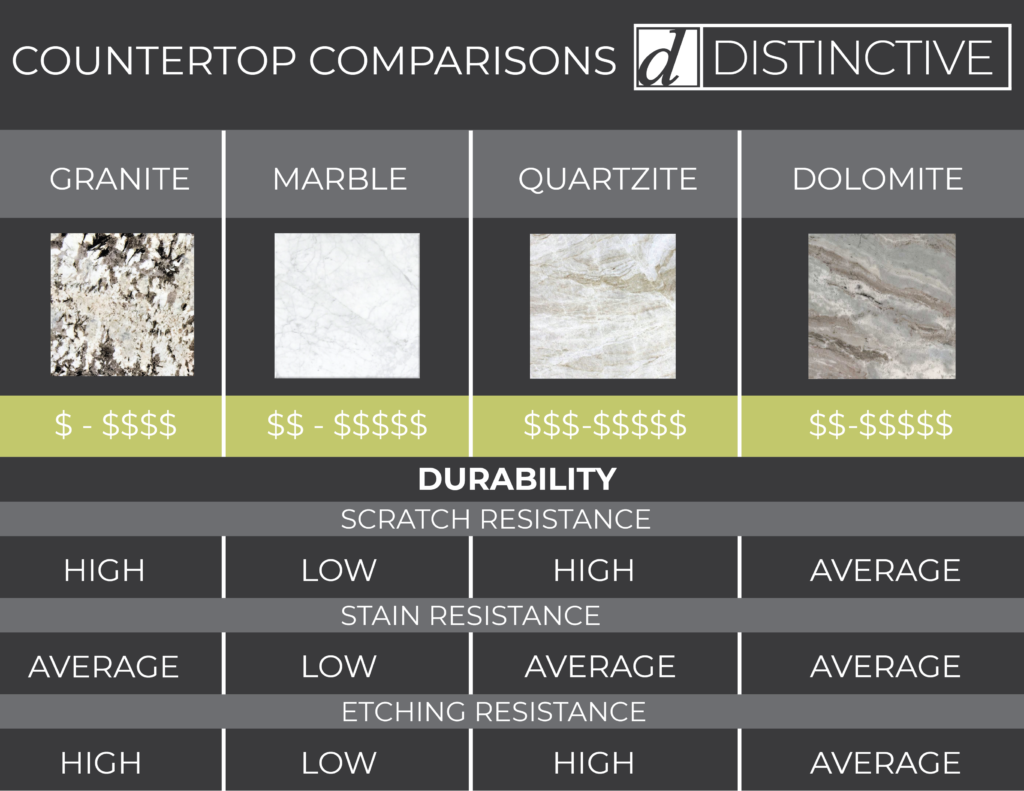





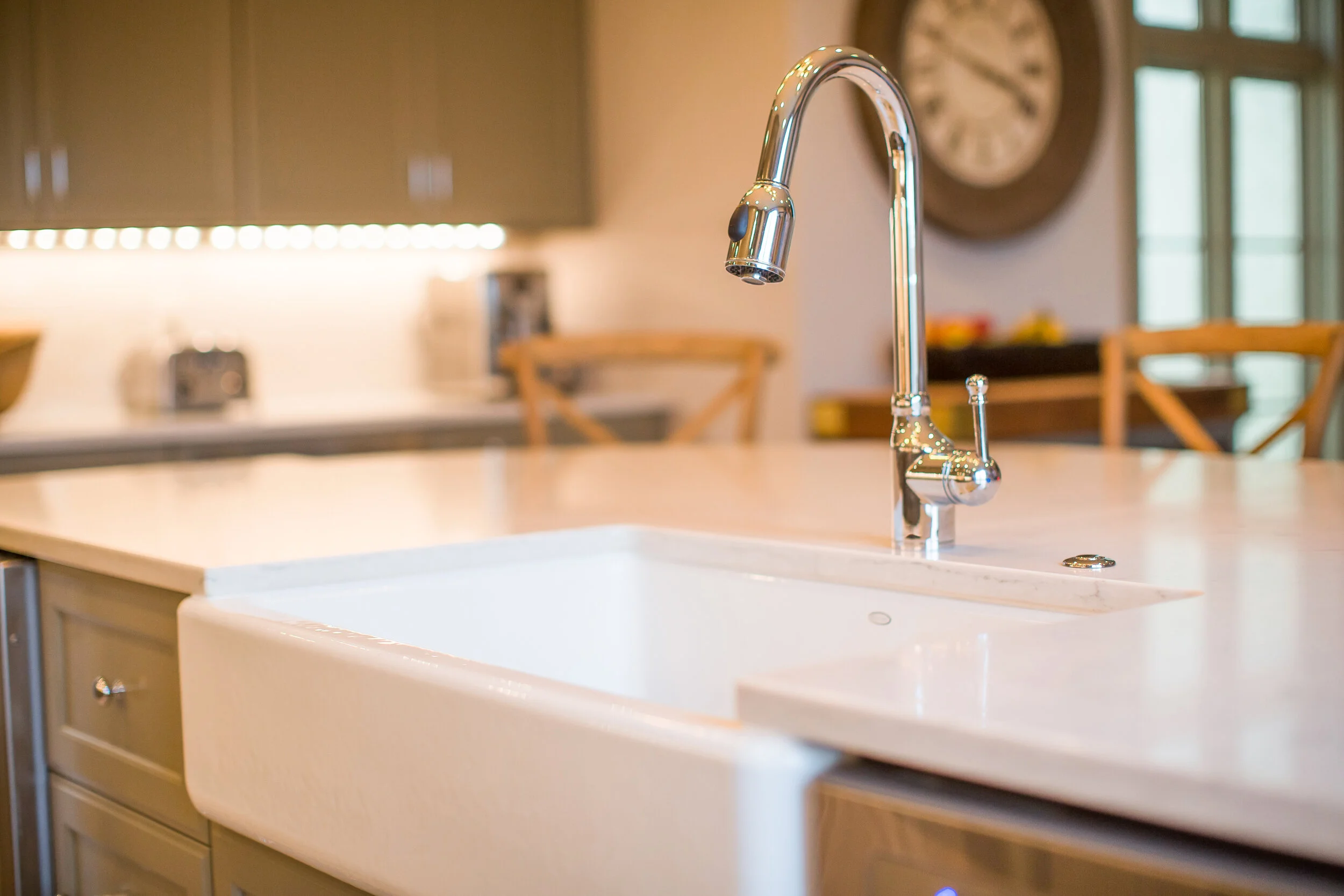


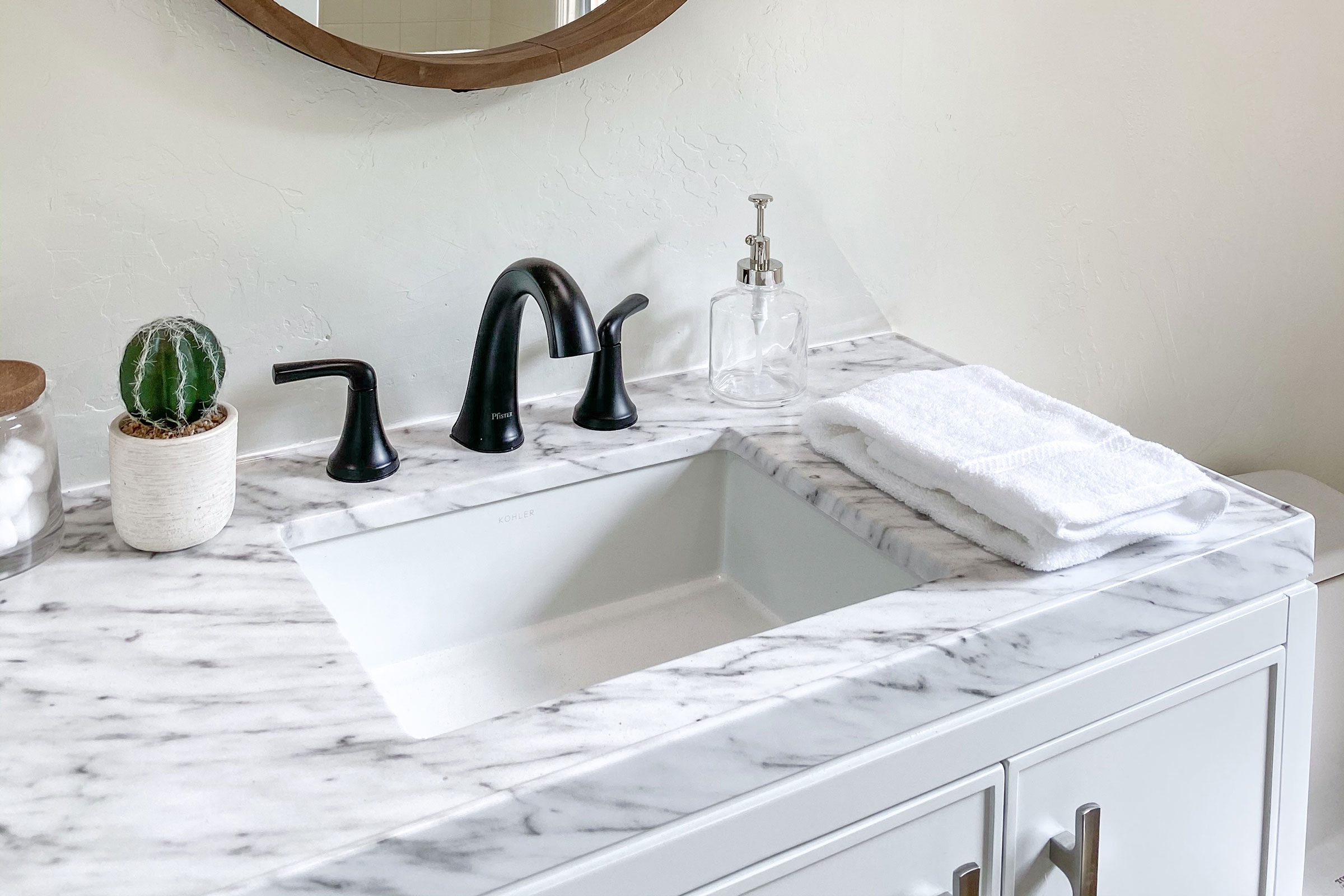
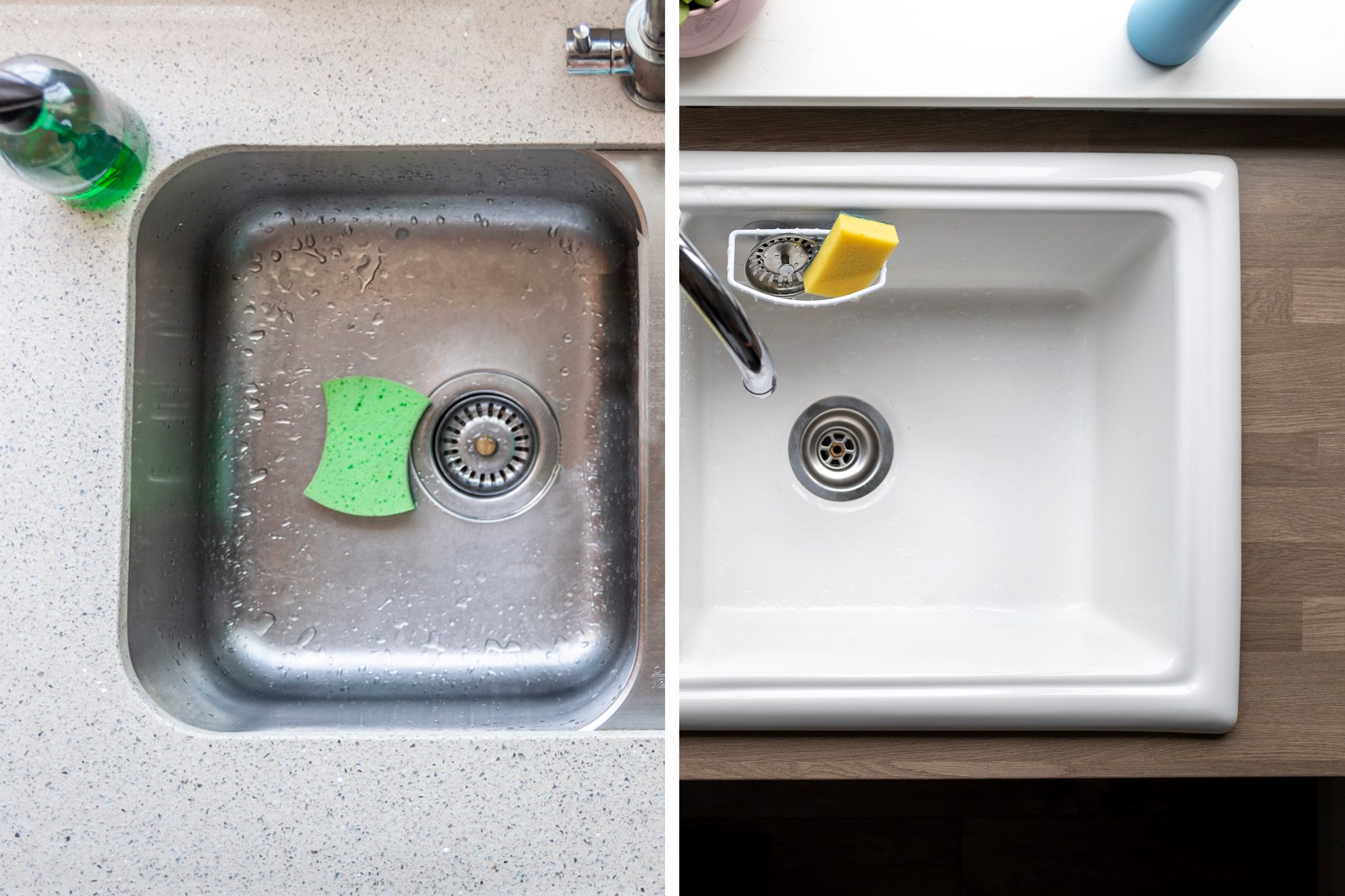

:max_bytes(150000):strip_icc()/Bathroom-countertop-materials-1821381-v3-9ad344e61bf1486e81adbe703a5b0c95.png)

